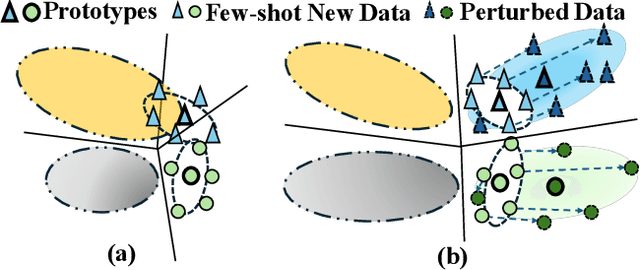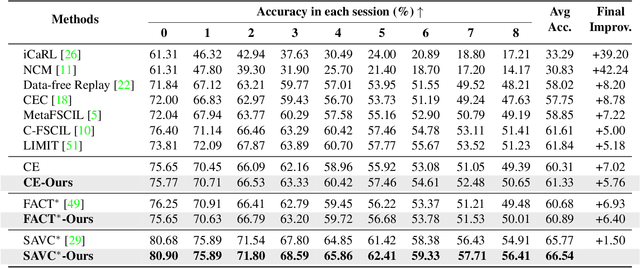Yijie Hu
Let It Flow: Agentic Crafting on Rock and Roll, Building the ROME Model within an Open Agentic Learning Ecosystem
Dec 31, 2025Abstract:Agentic crafting requires LLMs to operate in real-world environments over multiple turns by taking actions, observing outcomes, and iteratively refining artifacts. Despite its importance, the open-source community lacks a principled, end-to-end ecosystem to streamline agent development. We introduce the Agentic Learning Ecosystem (ALE), a foundational infrastructure that optimizes the production pipeline for agent LLMs. ALE consists of three components: ROLL, a post-training framework for weight optimization; ROCK, a sandbox environment manager for trajectory generation; and iFlow CLI, an agent framework for efficient context engineering. We release ROME (ROME is Obviously an Agentic Model), an open-source agent grounded by ALE and trained on over one million trajectories. Our approach includes data composition protocols for synthesizing complex behaviors and a novel policy optimization algorithm, Interaction-based Policy Alignment (IPA), which assigns credit over semantic interaction chunks rather than individual tokens to improve long-horizon training stability. Empirically, we evaluate ROME within a structured setting and introduce Terminal Bench Pro, a benchmark with improved scale and contamination control. ROME demonstrates strong performance across benchmarks like SWE-bench Verified and Terminal Bench, proving the effectiveness of the ALE infrastructure.
Can MLLMs Absorb Math Reasoning Abilities from LLMs as Free Lunch?
Oct 16, 2025Abstract:Math reasoning has been one crucial ability of large language models (LLMs), where significant advancements have been achieved in recent years. However, most efforts focus on LLMs by curating high-quality annotation data and intricate training (or inference) paradigms, while the math reasoning performance of multi-modal LLMs (MLLMs) remains lagging behind. Since the MLLM typically consists of an LLM and a vision block, we wonder: Can MLLMs directly absorb math reasoning abilities from off-the-shelf math LLMs without tuning? Recent model-merging approaches may offer insights into this question. However, they overlook the alignment between the MLLM and LLM, where we find that there is a large gap between their parameter spaces, resulting in lower performance. Our empirical evidence reveals two key factors behind this issue: the identification of crucial reasoning-associated layers in the model and the mitigation of the gaps in parameter space. Based on the empirical insights, we propose IP-Merging that first identifies the reasoning-associated parameters in both MLLM and Math LLM, then projects them into the subspace of MLLM, aiming to maintain the alignment, and finally merges parameters in this subspace. IP-Merging is a tuning-free approach since parameters are directly adjusted. Extensive experiments demonstrate that our IP-Merging method can enhance the math reasoning ability of MLLMs directly from Math LLMs without compromising their other capabilities.
Disentangling Tabular Data towards Better One-Class Anomaly Detection
Nov 12, 2024Abstract:Tabular anomaly detection under the one-class classification setting poses a significant challenge, as it involves accurately conceptualizing "normal" derived exclusively from a single category to discern anomalies from normal data variations. Capturing the intrinsic correlation among attributes within normal samples presents one promising method for learning the concept. To do so, the most recent effort relies on a learnable mask strategy with a reconstruction task. However, this wisdom may suffer from the risk of producing uniform masks, i.e., essentially nothing is masked, leading to less effective correlation learning. To address this issue, we presume that attributes related to others in normal samples can be divided into two non-overlapping and correlated subsets, defined as CorrSets, to capture the intrinsic correlation effectively. Accordingly, we introduce an innovative method that disentangles CorrSets from normal tabular data. To our knowledge, this is a pioneering effort to apply the concept of disentanglement for one-class anomaly detection on tabular data. Extensive experiments on 20 tabular datasets show that our method substantially outperforms the state-of-the-art methods and leads to an average performance improvement of 6.1% on AUC-PR and 2.1% on AUC-ROC.
Covariance-based Space Regularization for Few-shot Class Incremental Learning
Nov 02, 2024



Abstract:Few-shot Class Incremental Learning (FSCIL) presents a challenging yet realistic scenario, which requires the model to continually learn new classes with limited labeled data (i.e., incremental sessions) while retaining knowledge of previously learned base classes (i.e., base sessions). Due to the limited data in incremental sessions, models are prone to overfitting new classes and suffering catastrophic forgetting of base classes. To tackle these issues, recent advancements resort to prototype-based approaches to constrain the base class distribution and learn discriminative representations of new classes. Despite the progress, the limited data issue still induces ill-divided feature space, leading the model to confuse the new class with old classes or fail to facilitate good separation among new classes. In this paper, we aim to mitigate these issues by directly constraining the span of each class distribution from a covariance perspective. In detail, we propose a simple yet effective covariance constraint loss to force the model to learn each class distribution with the same covariance matrix. In addition, we propose a perturbation approach to perturb the few-shot training samples in the feature space, which encourages the samples to be away from the weighted distribution of other classes. Regarding perturbed samples as new class data, the classifier is forced to establish explicit boundaries between each new class and the existing ones. Our approach is easy to integrate into existing FSCIL approaches to boost performance. Experiments on three benchmarks validate the effectiveness of our approach, achieving a new state-of-the-art performance of FSCIL.
SaliencyCut: Augmenting Plausible Anomalies for Open-set Fine-Grained Anomaly Detection
Jun 14, 2023Abstract:Open-set fine-grained anomaly detection is a challenging task that requires learning discriminative fine-grained features to detect anomalies that were even unseen during training. As a cheap yet effective approach, data augmentation has been widely used to create pseudo anomalies for better training of such models. Recent wisdom of augmentation methods focuses on generating random pseudo instances that may lead to a mixture of augmented instances with seen anomalies, or out of the typical range of anomalies. To address this issue, we propose a novel saliency-guided data augmentation method, SaliencyCut, to produce pseudo but more common anomalies which tend to stay in the plausible range of anomalies. Furthermore, we deploy a two-head learning strategy consisting of normal and anomaly learning heads, to learn the anomaly score of each sample. Theoretical analyses show that this mechanism offers a more tractable and tighter lower bound of the data log-likelihood. We then design a novel patch-wise residual module in the anomaly learning head to extract and assess the fine-grained anomaly features from each sample, facilitating the learning of discriminative representations of anomaly instances. Extensive experiments conducted on six real-world anomaly detection datasets demonstrate the superiority of our method to the baseline and other state-of-the-art methods under various settings.
 Add to Chrome
Add to Chrome Add to Firefox
Add to Firefox Add to Edge
Add to Edge